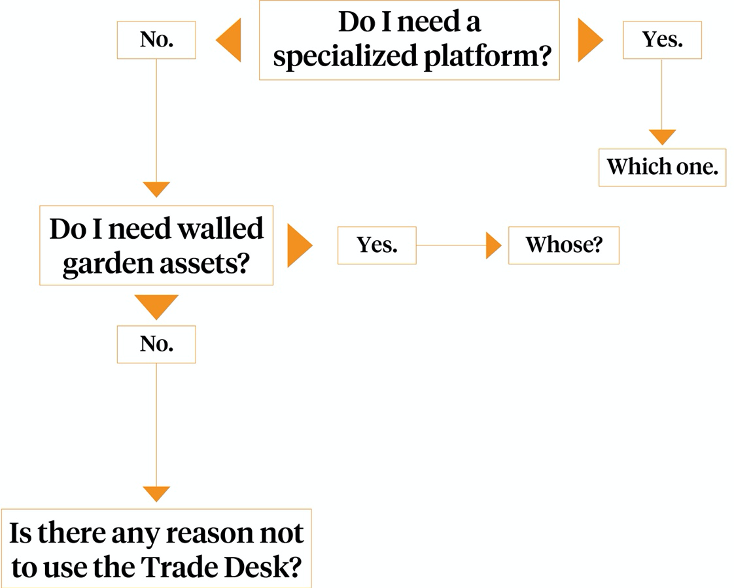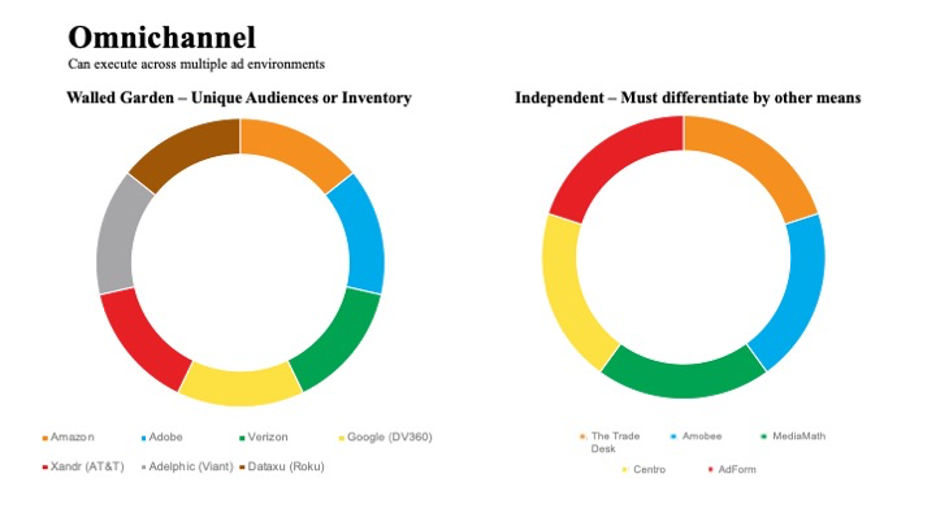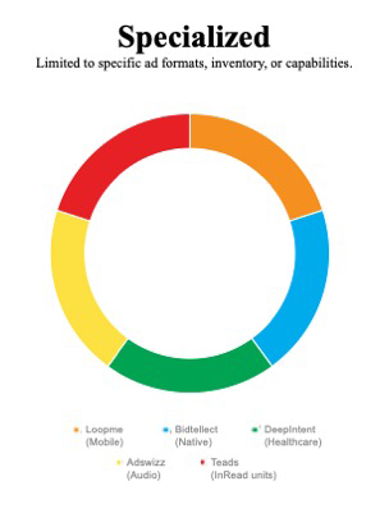Although the frenzy of platform acquisitions and mergers has died down it is still a constant challenge to navigate all the new players and offerings. It helps to bucket the buying platforms into two main categories, “omnichannel” and “specialized.” While omnichannel DSPs are awarded most of the budget and thus steer the industry, specialized DSPs continue to fill gaps such as heavily-nuanced client verticals (pharma, travel) and specific media types (native, social, direct mail).
These days omnichannel DSPs have very similar capabilities and most are open to leveraging their formidable engineering resources to solve any missing integration or UI nuance that is acting as a blocker to potential adoption. Therefore, the main differentiator across this category has become what unique data and/or inventory they offer. This is why these precious assets are usually locked behind walled gardens.
Omnichannel DSPs that lack unique assets are in a very tough spot, particularly for two reasons:
The impending death of the cookie and continued scrutiny of 3rd party data are making proprietary 1st party assets more important than ever.
Although they lack walled garden assets and their once-unique bid factors have been adopted by most of their competitors, The Trade Desk have continually increased their share of global industry adoption by maintaining incredibly high standards for customer service, 3rd party integrations, and UI flexibility. For these reasons many in the industry consider them to be the leading independent platform and a yardstick by which to measure others.
Thus, the decision process for selecting the right DSP for your campaign in 2020 tends to go something like this:

With DataXu’s recent sale to Roku there aren’t many independent omnichannel DSPs left. The only survivors will be those that can find a competitive angle that buyers respond to, like AdForm’s complete tech stack or Amobee’s Brand Intelligence planner. Flexible rates and promotional pricing will also be key.
Regardless of what classification a platform may fall under, the war for differentiation will continue to drive competition and innovation amongst our partners. Our responsibility, as always, will be to track all developments, evaluate through RFIs, betas, and bakeoffs, and recommend the best fit for each client campaign.
Category Examples:


Read the first article, Part 1, Overall Trends, to learn more.
